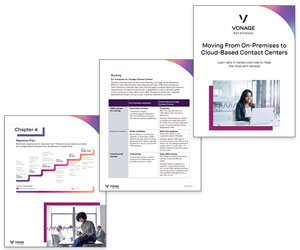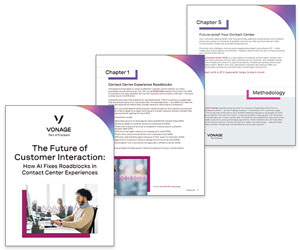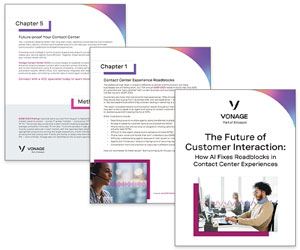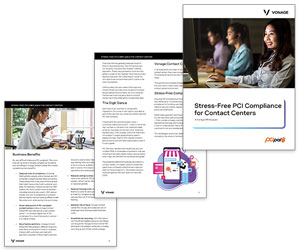Here’s a scenario: a senior executive needs to buy a new technology solution to help his business keep up with the competition.
You might assume this would be a decision based on hard facts, where the executive carefully considers the pros and cons of every solution on the market before reaching his conclusion.
But you would be wrong. According to Harvard Business School professor Gerald Zaltman, 95% of our purchase decisions take place unconsciously.
That is to say, we often intuitively reach a conclusion based upon our emotional response, which we back up with a logical reason.
And it’s this logical reason that sticks in our heads. This is how we remember making a decision, and it’s why we believe our own decisions, and those of others, are completely rational.
But that’s not to say facts are useless to a sales person. Facts still play a part in sales – the right facts can change your emotional position on a product, but ultimately it’s the emotion, not the fact, that’s important.
While you can’t ignore the power of facts and emotion, a combination of both approaches is often best – it’s getting the balance right which is the real challenge.
What Makes a Rational Sales Pitch Fail?
A solely rational sales pitch can often go nowhere. This is because too much information can lead to “analysis paralysis,” which is especially true for complex products or services.
With so many pros and cons to every product on the market, a potential buyer can become overwhelmed and simply do nothing.
For the sales person, this could mean a lot of wasted time.
Why We Overlook the Emotional Side in Sales (And Why You Shouldn’t)
So, if it’s our emotional, intuitive side that is really in charge of our decisions, why do we place so much emphasis on facts and figures?
Well, we all like to think of ourselves as rational, logical people and we like to think that the senior executives we’re trying to sell to are equally rational. Emotional decision-making is often seen as irresponsible – why would you invest a large amount of money due to an emotional reaction?
However, studies have shown that intuition isn’t as illogical as it seems. In fact, it has a logic all of its own.
The Iowa Gambling Study by psychologists and behavioural economists has shown that our emotional decisions are neither irrational nor irresponsible.
Instead, these decisions are based on a deeply empirical mental processing system, which is capable of processing a huge amount of data without getting overwhelmed. On the other hand, our conscious mind can only process three or four new pieces of information at a time due to the limitation on our working memory.
For instance, the study demonstrated how effective the emotional brain is at effortlessly figuring out the probability of success in a card game.
The subjects were given an imaginary budget of money and four stacks of cards. Obviously the objective of the game was to win as much money as possible, but to do so, the subjects needed to draw a card from one of four decks.
These decks of cards were carefully prepared – two of the decks led to consistent wins, while the other two had high payouts but also carried big punishments. After drawing about 50 cards, people stopped drawing from the risky decks, but they could only explain why after drawing around 80 cards.
What’s interesting is that the researchers tracked the subjects’ anxiety and found that people started to feel nervous drawing from the risky deck after just 10 cards. It seems logic is slow, but intuition is fast.
Logical Thinking Sells Simple Products, Intuition Sells Complex Products
So, if intuition is more rational than it seems and over-rational sales tactics lead to “analysis paralysis,” when do you use each tactic?
As a general rule, logical selling works best to sell simple or low-cost products where simply knowing the facts is enough to convince someone to buy. Intuition-based tactics are best for complex products, where you don’t want to overwhelm a prospect with information.
A real-life example of why this works is a 2011 study, where researchers asked subjects to choose the best used car to buy.
In the first experiment, there were only four cars to choose from. Each car was rated in categories such as mileage and gas, leading to one clear winner. In this case, conscious deciders were 15% better at choosing the best car than unconscious deciders.
Next, they increased the number of cars on offer to 12, so that the decision was more complex. In this instance, unconscious deciders were 42% better at choosing the best car, whereas the conscious deciders were overloaded with information.
How You Can Lose on Paper, but Still Win
You need to get the emotional side of sales right, because while facts can help, for most complex or expensive purchases, it’s the emotional side of our brain in charge.
It’s therefore possible to lose on the spreadsheet but win over the phone. Say your solution isn’t as strong as your competitors and they have greater resources than you. You’ve lost, right? Wrong.
While it makes sense on paper to go with a competitor, if you appeal to a buyer’s emotional side, you can build trust. For instance, if your company was smaller, you could argue that you would really care about that client when the buyer may be worrying that the larger company won’t care enough to provide the best service.
In this instance, the emotional side has won. And it also goes to show how building a relationship is essential.
Appealing to the Emotional Side
The salesforce.com blog published an article showing the six subconscious reasons why people purchase a product or service. Every decision is based on one or more of these reasons:
Greed. “If I make a decision now, I will be rewarded.”
Fear. “If I don’t make a decision now, I’m toast.”
Altruism. “If I make a decision now, I will help others.”
Envy. “If I don’t make a decision now, my competition will win.”
Pride. “If I make a decision now, I will look smart.”
Shame. “If I don’t make a decision now, I will look stupid.”
With the right research, a sales person can play up to whichever one is most appropriate to the prospect. For instance, a product’s environmental aspect might appeal to the altruistic side of a company looking to boost its eco credentials.
On the other hand, say your research reveals that the prospect’s CIO has been recently promoted to that position. This new CIO is likely to be risk-averse, and any decision will trigger the thought ‘if I mess this up, I’m fired’ in the back of their head. Your job is to convince them that whatever you offer is a risk-free option.
To connect with the emotional side, you need to find the pain point and explore how what you offer could solve this. One of the best ways to do this is through sharing a story, as it’s a very good way of making a complex product personal.
Keep the rational facts simple and powerful – and choose each fact carefully, so it addresses each customer’s pain point.
When it comes to facts vs. emotions, they each support the other – but don’t forget, it’s the emotional side of our brain that’s always really in charge (even if we pretend it isn’t).
Developing a relationship with a prospect is obviously essential for this to be effective. Find out how ContactWorld for Sales can you help you achieve sales success.
Author: Guest Author
Published On: 13th Oct 2017 - Last modified: 17th Oct 2017
Read more about - Archived Content, Vonage











